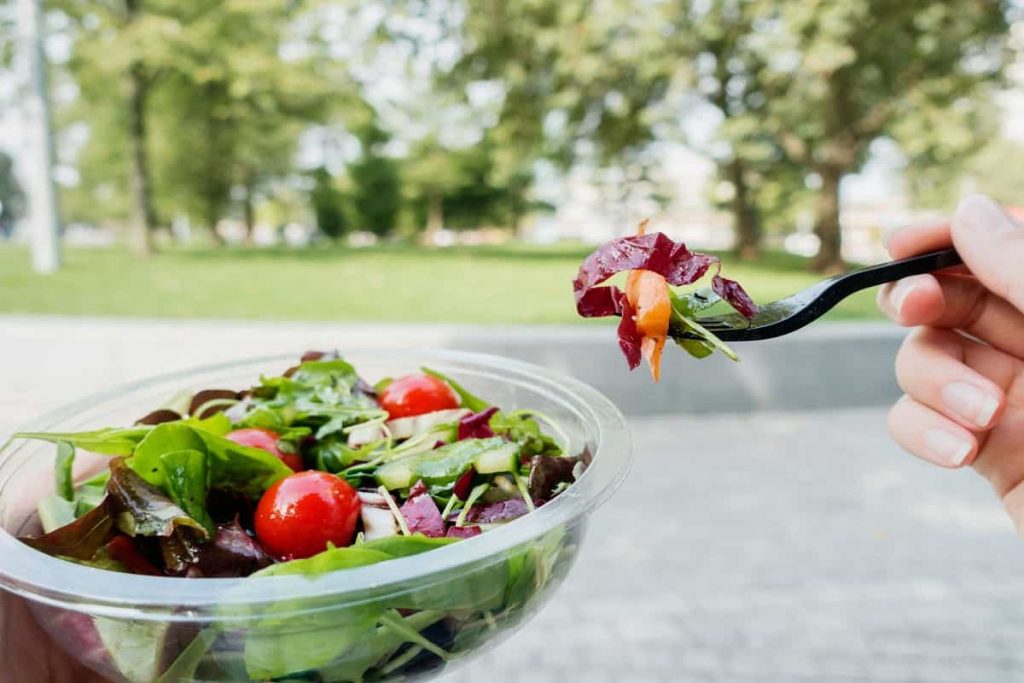Clean eating is all about consuming natural whole foods rather than packaged, processed food products. Real food is free from harmful artificial ingredients and retains the nutrients our bodies need to thrive. By eating clean, you can lose weight, gain energy, and lower your risk for cancer, heart disease, diabetes, and many other chronic conditions. Here are ten simple ways you can improve clean up your diet for better health.

Table of Contents
1. Don’t Be Misled by Labels
Terms like wholegrain, low fat, or no artificial flavors can make foods sound healthy even when they’re not. For example, wholegrain cereals and low-fat yogurts often contain a high percentage of refined sugar. Ignore health claims on labels and choose foods with fewer additives. A box of 100% rolled oats is a better breakfast choice than a pack of heart-healthy instant oatmeal made from16 ingredients, the second of which is sugar, and the fourth of which is salt.
2. Fry in Canola Oil
A balance of omega-3 and omega-6 fatty acids is necessary for optimal health, but the standard Western diet contains far too much of the latter. Excess omega-6 can lead to inflammatory diseases such as allergies, asthma, arthritis, and dermatitis. Cooking oils such as sunflower, soybean, corn, and cottonseed are leading sources of dietary omega-6. Canola oil contains an equal balance of omega-3 and 6 and is one of the healthiest oils you can use for frying.
3. Switch to Sourdough Bread
Wheat gluten is highly allergenic but can be rendered much more digestible through a natural fermentation process. Sourdough bread is slowly leavened using wild airborne yeast and probiotic lactobacilli. It is more nutritious than fast-rising bread because the lactic acid neutralizes phytates in the flour that interfere with vitamin and mineral absorption. Sourdough also has a lower glycemic index, so it helps to stabilize blood sugar and decrease the risk of type 2 diabetes.
4. Steer Clear of Breaded and Battered Foods
Choose fresh poultry or fish over the frozen battered or breaded kind. The processed products are higher in calories and lower in protein. For example, a leading brand of chicken burger contains 253 calories per 100 grams with 14 grams of protein and 15 grams of fat. An equal amount of skinless chicken breast contains 109 calories, 24 grams of protein, and virtually no fat. You can grill or pan-fry a fresh piece of fish or poultry in less time than it takes to heat up a coated frozen fillet.
5. Make High Fiber Soups
Fiber helps the body to absorb vitamins and minerals, lowers cholesterol, and reduces the risk of bowel disease and colon cancer. Vegetable soups are a great way to get more fiber in to clean up your diet, along with a host of other nutrients. When adding vegetables to soups, do not peel potatoes, carrots, zucchini, or anything else with edible skin. Chop the stalks of broccoli or cauliflower and include them along with the florets. Use legumes like beans, peas, or lentils for texture, rather than pasta or rice.
6. Swap Whole Fruit for Juice
Fruit juice is a concentrated source of fructose, a sugar commonly used to sweeten soft drinks. A 12-ounce glass of apple juice and a 12-ounce glass of cola both contain a whooping ten teaspoons! A medium apple has about half the sugar and calories. The skin contains protective flavonoids and anti-oxidants. The whole fruit is also rich in fiber, which (in addition to its other benefits) helps the liver to metabolize the fructose more efficiently.
7. Snack on Nuts
Many people crave the combination of starch, oil, and salt found in deep-fried junk-food snacks such as potato chips and corn chips. Nuts provide the same satisfying crunch along with protein, fiber, healthy fats, and more. Pecans contain cholesterol-lowering plant sterols and oleic acid. Almonds are a good source of heart-protecting flavonoids. Walnuts provide anti-inflammatory omega-3 fatty acids as well as cancer-fighting antioxidants.
8. Eat Grass-fed Beef
Meat from cattle fed on their natural diet of grass is more nutritious than meat from cows fattened on grain in feedlots. Grass-fed beef contains the recommended balance of omega 3 and omega-6 fats, with 7% of total fat made up of omega-3. Grain-fed beef typically contains only 1% omega-3. In addition, meat from grass-fed ruminants is the best source of conjugated linoleic acid or CLA, a type of fat that has been shown to reduce the risk of breast, colon, and lung cancers.
9. Buy Food from the Producer
Visit farm shops and farmer’s markets as well as local butchers, greengrocers, and bakeries. You may find that you can get fresh, high-quality products for the same price or less than you would find at the supermarket. Food producers in your area may also offer healthy items you can’t find in your grocery stores such as sourdough bread and grass-fed beef. Many farmers offer vegetable box deliveries with seasonal produce delivered to your door on a weekly basis.
10. Make Your Own Frozen Dinners
Many people turn to processed frozen microwave meals because they don’t have time to cook after a long day at work. Processed dinners often contain unhealthy oils, excess salt, and unnecessary sugar as well as emulsifiers, stabilizers, acidity regulators, and other dubious ingredients. If you can’t cook during the week, make large batches of one-pot meals at the weekend and freeze individual or family-sized portions in re-seal-able plastic containers.
Read More:- Why Wheat is Ruining Your Diet




